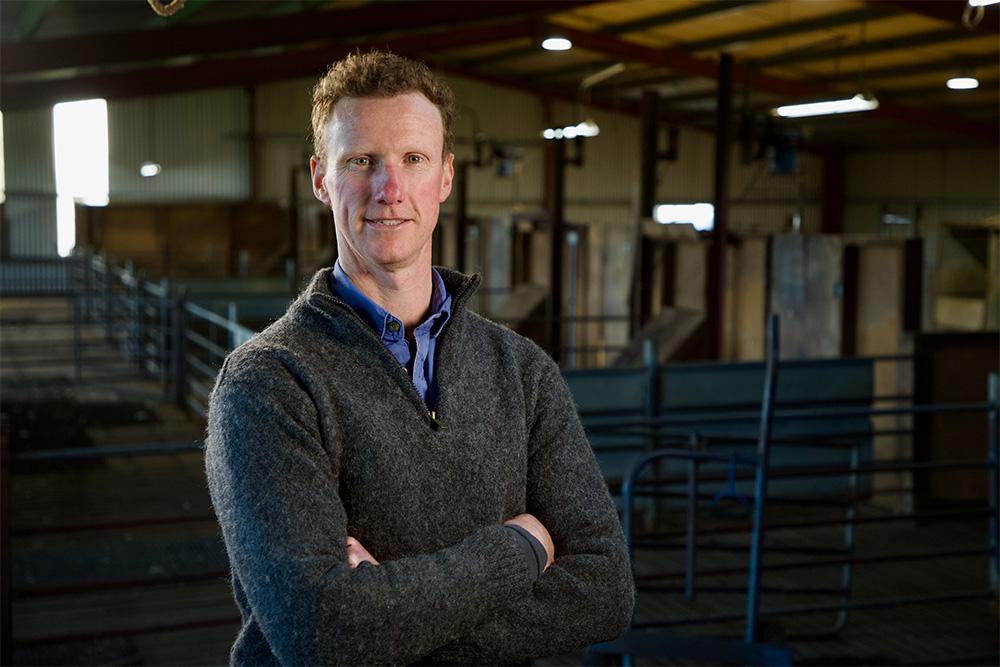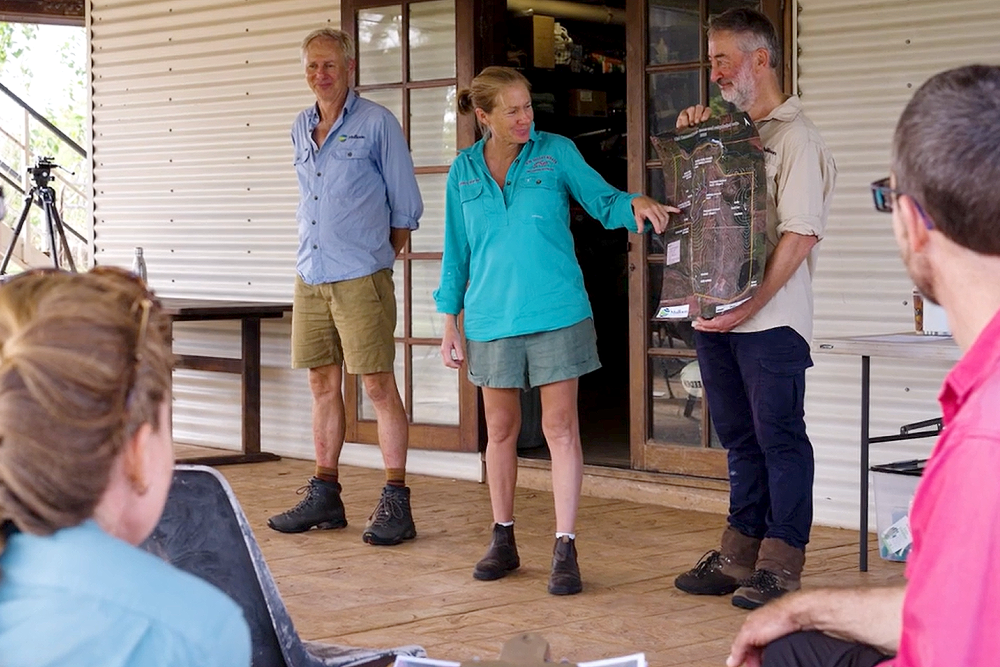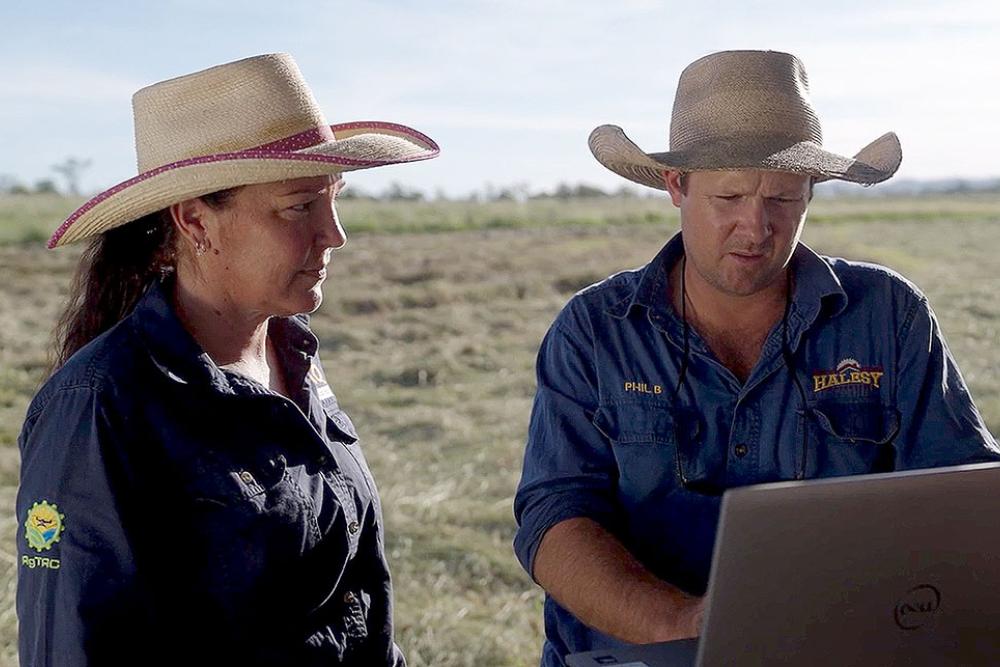Olga Downs Station, near Richmond in northwest Queensland, has been in the Harrington family for almost 90 years.
Family patriarch, Peter, admits he usually favours traditional practices for cattle production.
“We’re probably still a bit old fashioned in some ways. It’s just a wet and dry draft when we go through the breeders. If she hasn’t got a bag of milk or a calf, she usually goes to the meat works,” Peter said.
Now Peter’s outlook is beginning to change.
The Tropical North Queensland Drought Resilience Adoption and Innovation Hub is introducing outback graziers, like Peter, to new technologies that could improve their business decision making in dry times.
Through the TNQ Drought Hub, Peter took part in a trial of a handheld breath test pregnancy tool to see if it could withstand the dry and dusty conditions of the outback.
Agscent Technical Field Officer, Amelia Unthank, said this pioneering Australian device can deliver a result to the farmer in under 60-seconds—without the need for a vet.
“Reproductive management is one of the most important variables in livestock production and a primary driver of profitability,” Amelia said.
“With the technology in the farmer's hand, they are now equipped with the information they need to make better decisions and to improve outcomes for their systems.”
Peter Harrington now sees this tool as a game changer for his operation.
“With a more accurate tool, we can be far more precise on what numbers we sell.
“Any new technology that can help save a bit of time and make things simpler and easy to use, it's going to help your enterprise.”
See how the TNQ Drought Hub is introducing outback graziers to innovative technology
The TNQ Drought Hub is funded by the Australian Government’s Future Drought Fund Drought Resilience Adoption and Innovation Hubs Program.
Video duration 5 mins 38 secs
Introduction
This is the transcript of a video case study produced by the Australian Government’s Future Drought Fund. Learn more about the Future Drought Fund’s Drought Resilience Adoption and Innovation Hubs Program.
Transcript
[Recording begins]
Professor David Phelps [0:26]:
At the Tropical North Queensland Drought Hub, we think it's absolutely essential that we ensure that the northern beef industry—and all of our other industries across our region— have the access to the latest technologies. So, the investment from the Future Drought Fund is absolutely helping drive innovation. But more importantly, to help really look for those opportunities to be better prepared for, and more resilient to, drought into the future. Hubs right across Australia are absolutely integral to that because we all coordinate and work together to help get the best results on the ground.
William Harrington [1:07]:
We're about an hour north of Richmond, which is about halfway between Townsville and Mount Isa on a beef cattle station in northwest Queensland called Olga Downs.
Peter Harrington [1:16]:
My family's been here since 1936. Yeah, drought's part of life out here. Preg testing's pretty important. When you're de-stocking, you can make sure you keep your breeders.
William Harrington [1:28]:
Our nearest vet is about 200 kilometres away and they're very busy. So, it's quite difficult to be able to preg test cows at the moment.
Professor David Phelps [1:35]:
So, today we're on Fletcherview Research Station, which is James Cook University's veterinary training and research facility just north of Charters Towers in northern Queensland. The same time as the vet students are doing their normal pregnancy testing, we're also introducing them to Agscent breath testing preg testing technology.
Charlotte Wood [1:59]:
The Agscent breath device was developed to solve a problem that our founder, Bronwyn Darlington, saw in her property. This age-old pregnancy testing method that was, you know, still invasive for the animals and can be quite dangerous to the operator. She has applied for funding to trial our device at a range of sites in different environments to ensure that we can optimise our technology for as many producers as possible.
Amelia Unthank [2:26]:
The Agscent Breath is a revolutionary pregnancy diagnostic tool and it's based off cutting edge technology, which is nanofiber sensing technology coming straight out of NASA.
Charlotte Wood [2:39]:
It's a point of care device. You scan the RFID tag so that that's stored, as part of the data and you collect a breath sample from the single nostril.
Amelia Unthank [2:51]:
You're gonna have a test result within 60 seconds and that test result will be displayed to you in your hand on the device. But what it will also do is make a record of that sample and that result in line with its RFID tag if you choose. And it will send those results to the Agscent app where you'll be able to integrate the data with any farm management software. And we can detect as early as 18 days. Reproductive management is one of the most important economic variables of a livestock production system and it is a primary driver of profitability.
With the technology in the farmer's hand, they are now equipped with the information they need to make better reproductive management decisions and to improve their outcomes for their systems. We're here today to test the technology in the northern Queensland environment to ensure that it's robust enough to stand up to the heat and humidity and the dust.
Peter Harrington [3:55]:
Pleased to be a partner in the Tropical North Queensland Drought Hub. It's great to be able to help them out there, provide some cattle to do some trials with. Yeah, we're probably still a bit old fashioned in some ways, it’s just a wet and dry draft here when we go through the breeders. If she hasn't got a bag of milk or a calf, well, she usually goes to the meat works. So with an accurate tool we can be far more precise on what numbers we sell.
Professor David Phelps [4:26]:
Technology has always been our way forward, especially in agriculture. It's always allowed agriculture to reduce costs of production to become more efficient, more effective, and particularly where the innovation is really integrated with the problems on the ground. That's where the really good technology emerges.
William Harrington [4:48]:
It's really exciting to be able to use my passion for technology to be able to improve at the production and resiliency of our family business on the station.
Peter Harrington [4:58]:
Any new technology that can help save a bit of time and make things simpler and make and easy to use, it's going to help your enterprise. The beauty of this technology is it's pretty easy to use. We've gotta keep it simple. This breath testing product that will be a game changer, I'm sure.
[Recording ends]



